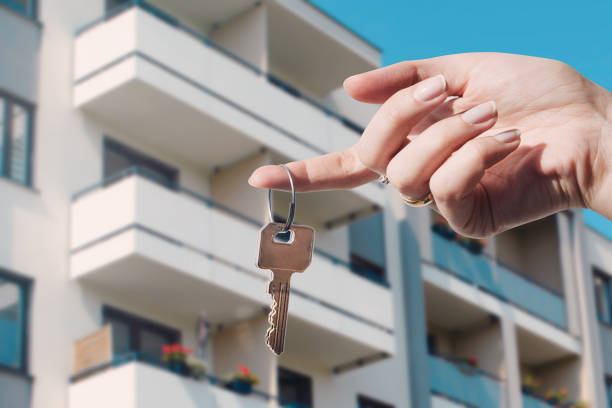Your Complete Guide to Apartment Rentals: Finding the Perfect Home
Finding the right apartment rental can be a challenging yet rewarding process that impacts your daily life, financial health, and overall wellbeing. Whether you're a first-time renter, a student seeking shared accommodations, or someone looking to upgrade their living situation, understanding the rental landscape is essential. This comprehensive guide explores crucial considerations when searching for apartment rentals, from property types and security features to the benefits of shared living arrangements.

Key Factors to Consider When Choosing Home Apartment Rentals
The apartment hunting process requires careful consideration of several critical factors. Location should be your first priority—evaluate proximity to your workplace or school, access to public transportation, and neighborhood safety. Create a realistic budget that accounts not only for monthly rent but also utilities, parking fees, and amenities. Many renters overlook the importance of lease terms; pay close attention to lease length, renewal options, pet policies, and maintenance responsibilities.
Space requirements vary significantly between renters. Consider both your current and future needs—will you need a home office, extra storage, or room for entertaining? Building amenities can significantly enhance your living experience, so determine which are essential versus nice-to-have. These might include in-unit laundry, fitness centers, package reception services, outdoor spaces, or community rooms.
Accessibility is another crucial factor often overlooked during apartment searches. Consider building entry systems, elevator availability, and unit features if you or frequent visitors have mobility concerns. Finally, thoroughly research potential landlords or property management companies by reading reviews and speaking with current tenants to gauge responsiveness and reliability.
Different Types of Apartments Available for Rent
The rental market offers diverse apartment types suited to various needs and preferences. Studio apartments combine living, sleeping, and kitchen areas into a single open space, making them ideal for individuals seeking affordability in prime locations. One-bedroom apartments provide separate sleeping quarters while maintaining a compact footprint, offering privacy without excessive space.
Two and three-bedroom units accommodate roommates, families, or individuals needing extra space for home offices or guests. These larger units typically feature proportionally larger common areas and potentially multiple bathrooms. Luxury apartments represent the premium segment, offering high-end finishes, spacious layouts, and extensive amenity packages, though at significantly higher price points.
Converted spaces present unique rental opportunities with distinctive character. These include loft apartments in former industrial buildings featuring high ceilings and open floor plans, converted warehouses with industrial aesthetics, and historic building conversions that preserve architectural details while offering modern conveniences. Additionally, some markets offer micro-apartments designed to maximize functionality in minimal square footage through clever storage solutions and multi-purpose furniture.
Security Features to Check Before Renting an Apartment
Safety considerations should never be compromised when selecting a rental property. Begin your assessment at the building’s exterior by evaluating perimeter security, including fencing, gates, lighting, and surveillance cameras. Entry systems deserve careful scrutiny—look for secure main entries with functioning intercoms, key fob systems, or doorman services that prevent unauthorized access.
Unit-specific security features provide your final defense layer. Verify that all doors have solid construction with deadbolt locks, peepholes, and properly functioning frames. Windows, especially on lower floors, should have secure locks and possibly security bars where appropriate. Emergency exits should be clearly marked and accessible, while smoke detectors and carbon monoxide alarms should be present and functional.
The neighborhood context significantly impacts your overall security. Research crime statistics for the area, observe activity patterns at different times of day, and speak with potential neighbors about their experiences. Additionally, inquire about the property’s security history, including any past break-ins or significant incidents, and ask about the management’s response to such situations.
Benefits of Shared Apartment Rentals for Students
Shared apartment rentals offer numerous advantages for students beyond simple cost savings. The financial benefits are substantial—splitting rent, utilities, and common supplies significantly reduces individual expenses. This arrangement often allows students to access better locations and amenities than they could afford individually. Many shared apartments are located closer to campus or in desirable neighborhoods with convenient access to transportation, shopping, and entertainment.
The social aspects of shared living provide valuable developmental experiences. Living with roommates helps students build communication skills, practice conflict resolution, and develop lasting friendships. These interpersonal dynamics create built-in support systems during academically challenging periods. Additionally, shared responsibilities like cleaning, cooking, and managing household affairs help students develop essential life skills applicable long after graduation.
From an academic perspective, roommates often serve as study partners, particularly those in similar programs. This creates opportunities for collaborative learning, shared resources, and academic accountability. Many students also find that the independence gained through apartment living, as opposed to dormitory housing, better prepares them for post-graduation life while still providing the social benefits of shared living arrangements.
Navigating the Apartment Rental Process
Successfully securing an apartment rental requires organization and preparation. Begin by assembling necessary documentation before viewing properties—this typically includes proof of income (pay stubs or offer letters), references from previous landlords, identification, and sometimes credit reports. Understanding typical application processes helps manage expectations about timeline and requirements.
When visiting potential rentals, bring a prepared checklist covering everything from appliance condition to cellular reception. Document any existing damage with photos before signing agreements. Read lease agreements thoroughly, paying special attention to policies on guests, noise, maintenance responsibilities, and termination conditions. Don’t hesitate to negotiate terms before signing if certain aspects don’t meet your needs.
Once you’ve selected an apartment, prepare for move-in by scheduling utilities activation, securing renters insurance, and planning your moving logistics. Creating a detailed inventory of your belongings before moving helps with both insurance documentation and eventual move-out processes. Finally, establish positive landlord relationships from the beginning by communicating clearly, paying rent promptly, and addressing concerns professionally.
The apartment rental process may seem overwhelming, but approaching it methodically with proper preparation ensures you’ll find accommodations that truly feel like home. By carefully evaluating your priorities, thoroughly assessing security features, understanding different apartment types, and recognizing the benefits of various living arrangements, you can make informed decisions that support your lifestyle and financial goals.




